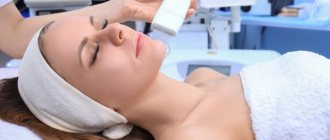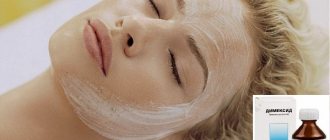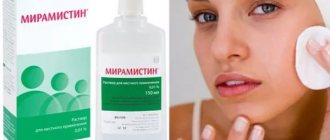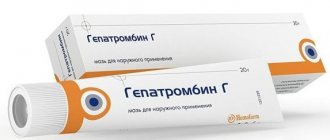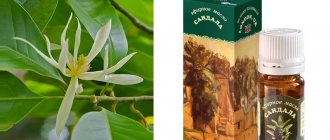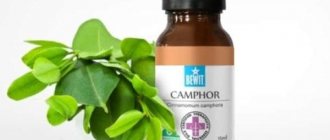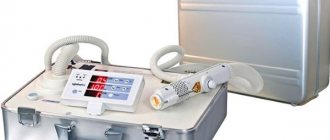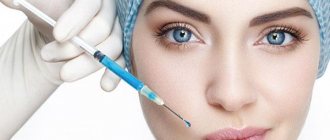Liposomes in cosmetology have become increasingly popular over the past few decades. They are called transdermal transport systems, which are increasingly used by cosmetics manufacturers for skin care and treatment.
They are used in cosmetics to move active substances into the deeper layers of the skin.
↓ List of cosmetics with liposomes below ↓
What are liposomes
Many cosmetic products that are considered among the best are not able to penetrate deep into the skin. Most of them simply create a protective film on the face, which improves the appearance, but does not eliminate the problem. The active components cannot penetrate deep into the epidermis, which means that their effect is insignificant; in addition, they are constantly exposed to ultraviolet radiation and interact with other components of the product.
Typically, this reaction contributes to the formation of allergies and irritation. And although a cosmetic product can only partially slow down aging, with prolonged use it can cause a lot of unpleasant consequences.
Using liposomes, you can achieve real results in rejuvenation, because such a cosmetic product is able to penetrate into the deep layers of the skin, and the substances affect the structure and function of the horny plates, eliminating the fat layer.
Liposomes themselves are spherical formations (bubbles or vesicles) that consist of phospholipids. They have a hydrophilic environment inside, and when they get under the skin, they decompose and divide into fragments, thereby covering large areas of the skin.
Liposomes can penetrate even the deepest layers of the skin, which gives them an advantage over other products. In addition, the product can be used to combat allergies and various irritations. In some cases, the internal environment of lipids can be filled with various useful substances.
What it is?
The word "liposome" comes from the Greek. Liposome, which stands for “lipos” - fat and “soma” - body.
They are artificially created microscopic lipid vesicles (vesicles) with liquid contents, consisting of phospholipid bilayers separated by an aqueous phase.
The shape and size of liposomes can be different and depend on their environment - the presence of salts, acidity level, etc.
Scientists have found that liposomes are effective transport agents.
Scientists first noticed them in 1965, and they began to be used in medicine since 1971. Even at the beginning of working with liposomes, researchers noticed that their structure was similar to cell membranes, which, as was already known at that time, performed important functions.
Effect on skin
Phospholipids are part of a living cell, namely the membrane. But they play a minor role in the stratum corneum; rather, fatty acids, cholesterol and ceramides, which are able to penetrate into the deepest layers of the epidermis, play a major role.
Phospholipids can increase the permeability of the upper layer of the dermis. The effect is that the skin is able to absorb more positive substances. In this case, products with liposomes initially have an accumulation effect, after which they penetrate deep into the epidermis. Using a transdermal cream with liposomes, you can influence the ability of the epidermis to naturally regenerate.
Each phosphatidylcholine, regardless of origin, has a high concentration of fatty acids and is also capable of saturating the skin with linoleic acid. Most often, fatty acids additionally soften the skin, in addition to affecting the structure of the epidermis.
Cosmetics with liposomes are considered medicinal and require special application, which is best done by a cosmetologist. The effect of such cosmetics on the skin is very great; in addition to moisturizing, the products rejuvenate and give the skin radiance and youth.
COSMETICS THAT TREATS
Skin diseases, even those that are not considered serious from a medical point of view, such as acne or peeling skin, can significantly poison a person’s life. In addition, doctors are usually very skeptical about patients' attempts to use cosmetics and do not advise applying anything to the skin other than specifically prescribed medications. Meanwhile, studies in recent years indicate that some cosmetics can, if not cure skin diseases, then at least weaken their symptoms or improve the results of drug treatment. The basis of skin care for skin diseases is corneotherapy, a system for restoring the functioning and integrity of the stratum corneum. It includes protecting the skin barrier layer from damage, supplying the skin with essential fatty acids, moisturizing, stimulating regeneration, using exfoliants, as well as products with anti-inflammatory and antioxidant effects.
“Night” (fragment). 1935 Artist A. Deineka.
Corneocytes are flat scales that form the stratum corneum <…>
Ceramide molecules <..>
The strategy for restoring the skin barrier includes hydration, protection and nutrition <…>
Science and life // Illustrations
Skin structure <…>
Life path of a keratinocyte <…>
‹
›
Both cosmetics and topical medications used in dermatology are applied to the surface of the skin. However, their destinations are different. The medicine, as a rule, needs to get deep into the skin, where living cells are located, otherwise it will not work. On the contrary, the area of action of most cosmetics is limited to the stratum corneum of the skin - a thin film consisting of keratin scales. Since these scales are dead, nucleated cells, dermatologists until recently did not treat the stratum corneum with due attention. But it turned out that by acting on the stratum corneum, it is possible to achieve not only purely cosmetic effects, such as softening and saturation with moisture, but also a significant improvement in the condition of the skin in many skin diseases.
This approach is called “corneotherapy” or “treatment of the stratum corneum” (from the Latin corneum - horny and English therapy - treatment). It was proposed by the famous American dermatologist Albert Kligman, who has the honor of discovering the role of retinoids in the treatment of acne. Kligman pioneered research into the physiology of the outer layer of skin, which led to the development of the concept of the “living stratum corneum.”
RESTORING THE BARRIER - STRATEGY AND TACTICS
If you want to know what the stratum corneum looks like, remember what the wall of blisters that swells during a burn looks like. It is this thin translucent membrane that is responsible for the barrier properties of the skin.
The skin is often compared to a fortress wall surrounding the body. What are the fortress walls made of? Most often, they are made of bricks or stones held together with cement. The stratum corneum of the skin is constructed according to the same principle. The role of bricks in it is played by keratinized cells - corneocytes, fastened together by special bridges (desmosomes), and the role of cement is played by a fat-like substance, or lipid layer. Moreover, the lipid layer of the stratum corneum is not just fat spread between the horny scales, but a complexly organized structure.
The composition of the lipid layers that fill the space between corneocytes includes special fats - ceramides. They are strikingly different from neutral sebum fats. The main feature of ceramides is that their molecules are polar: they have two ends - hydrophilic, that is, loving water, and lipophilic, which prefers fats and is afraid of water. Usually the lipophilic end is called the “tail” (it is longer), and the hydrophilic end is called the “head”. These molecules are remarkable in that they try with all their might to protect the hydrophilic “tails” from contact with water, rearranging themselves in such a way as to cover them with hydrophilic “heads”. There are two simple spatial structures that achieve this goal. The first structure is a sphere in which the hydrophobic ends face inward and the hydrophilic ends face outward (this is exactly how liposomes used in cosmetology are structured). The second structure is a two-layer plate in which the hydrophobic ends are hidden between two hydrophilic layers. It is these two-layer lipid layers that fill the space between the horny scales, creating a fairly strong barrier.
What happens if the barrier is destroyed or weakened? First, microorganisms begin to penetrate the skin, which puts a greater burden on the immune system. The result is skin infections and outbreaks of inflammation. Secondly, substances that were previously denied access (for example, detergent ingredients) penetrate into the skin. This may cause irritation and allergic reactions. Thirdly, the skin begins to dehydrate - it becomes less elastic, dull, and wrinkles appear on it.
In addition to all these troubles, gaps in the barrier create severe stress on the skin, which can trigger the development of skin diseases. The fact is that restoration of the skin barrier requires coordinated actions of various cells, and to ensure them, effective cellular dialogue is needed. Cells “talk” with the help of special chemicals - cytokines, small molecules that travel in the intercellular space, transmitting commands from cell to cell. In human language, the same letters are included in different words, and the same words are included in different sentences. Likewise, the same cytokines can be involved in transmitting different commands. If cells are under stress, they begin to produce excess amounts of cytokines. As a result, along with the command to accelerate the construction of the barrier, a signal comes that triggers an inflammatory reaction. There is an imbalance in the processes that regulate the rate of formation of the stratum corneum and the rate of its exfoliation. This can lead to thickening of the stratum corneum, peeling, inflammation and redness of the skin.
Fortunately, the opposite effect also exists: once barrier problems are corrected, many skin conditions that involve inflammation and flaking are more easily cured. In other words, anything that protects the barrier from destruction and helps restore it can improve both the appearance of the skin and its physiological condition.
When the skin requires emergency care, substances are used to temporarily create an artificial barrier. The simplest of them is Vaseline. Despite its undeservedly bad reputation, it is Vaseline (provided that it is very thoroughly cleaned) that serves as that inert, hypoallergenic agent that instantly closes gaps in the barrier and allows the skin to gather its strength. Vaseline and products based on it are most often used after medical and cosmetic procedures that lead to the removal of the stratum corneum, such as laser resurfacing, dermabrasion (mechanical removal of the epidermis), peeling. The disadvantages of Vaseline are poor absorption, due to which it lies on the skin in a greasy layer, and a strong occlusive effect (blocking the evaporation of moisture). Vaseline is recommended for use only in cases of acute destruction of the epidermal barrier, when it is necessary to prevent an overly violent reaction of skin cells that have suddenly lost external protection, as well as in situations where the skin is not able to form a full-fledged barrier itself. In other cases, it is not recommended to block the evaporation of water through the damaged stratum corneum. The fact is that increased evaporation serves as the main signal for the start of “repair work,” and the artificial barrier “misinforms” skin cells.
The restoration of the barrier is facilitated by products that supply the skin with building material. The skin is not a digestive organ, and “feeding” it with cosmetics is not so easy. However, the skin is able to absorb fats, that is, disassemble them into their component parts and use the resulting fragments to build their own lipids. Of course, the best building materials are fats similar to the lipids of the stratum corneum: ceramides, cholesterol and fatty acids. However, research shows that almost any fat emulsion can improve the condition of skin with a damaged barrier to some extent. The only problem is that most cosmetic emulsions are stabilized by surfactants, and some of them can damage the barrier. This applies primarily to sodium lauryl sulfate, a cheap component of many cosmetics and detergents.
Lamellar (plate-like) emulsions made from phospholipids are ideal for restoring the stratum corneum. They do not require the addition of surfactants, since phospholipids, like ceramides, have a hydrophilic “head” and a lipophilic “tail” and are capable of forming two-layer layers. Lamellar emulsions, even without the addition of active substances, have a therapeutic effect, as they prevent inflammation and irritation caused by the destruction of the barrier.
ESSENTIALS ARE
Symptoms of a lack of essential fatty acids have long been described in medicine. Doctors have noticed that problems such as dryness, redness, irritation and flaking of the skin can be eliminated by prescribing certain herbal oils (internally and externally) to the patient. The active principle of fats, which eliminates these symptoms, was called vitamin F.
It is now known that vitamin F is nothing more than linoleic, alpha-linolenic (or simply linolenic) and arachidonic acids. They play an important role in the physiology of the skin and other organs, but the human body is not able to synthesize them and must be obtained from food. All these acids are polyunsaturated, that is, they have two or more double bonds in the molecule. They serve as precursors of prostaglandins, mediators of the immune system that regulate the inflammatory response. Two main groups of prostaglandins are involved in inflammatory reactions of the skin - derivatives of omega-6 acids, namely linoleic and arachidonic acids, and derivatives of omega-3 acids, primarily linolenic acid. Due to the peculiarities of metabolism, linoleic and arachidonic acids increase inflammatory processes, while gamma-linolenic and linolenic acids, on the contrary, reduce inflammation.
Black currant, evening primrose, and borage oils are good sources of gamma-linolenic and linolenic acids, so they are used to correct symptoms of essential fatty acid deficiency. Among food products, the main source of omega-3 acids is sea fish.
ACID ETCHING
An important property of the skin is its ability to renew itself. The stratum corneum, for all its similarity to a fortress wall made of bricks and cement, cannot be considered a frozen structure. It is in constant motion: old scales are peeled off from the surface of the skin, and new cells rise from the depths of the epidermis in their place. This process is called keratinization because during development, cells are filled with keratin, a strong, elastic protein. Something similar happens in the ducts of the sebaceous glands, only here the cells, having reached the surface, are destroyed and “splash out” sebum.
In many skin diseases, the process of formation and exfoliation of horny scales and sebaceous gland duct cells is disrupted. For example, with acne, the cells of the sebaceous gland ducts, instead of coming to the surface in “orderly rows,” clog the duct, blocking the outflow of sebum. Due to the blockage of the duct, pimples appear on the surface of the skin, which are called acne or comedones. Keratinization is disrupted in psoriasis, ichthyosis, eczema and some other diseases. Usually, the barrier function of the skin suffers, which is expressed in dryness and a tendency to inflammatory processes.
In 1974, American researchers Yu. Van-Scott and R. Yu, who were developing remedies for ichthyosis, began to study the effect of alpha hydroxy acids on the skin. They found that these substances weaken the bonds between the horny scales, causing them to desquamate more quickly. After the thickened stratum corneum has left the skin, it looks fresher and smoother - roughness disappears, dryness decreases, and complexion improves. In high concentrations, alpha hydroxy acids not only accelerate the exfoliation of the stratum corneum, but also produce a number of other effects - they enhance the synthesis of collagen, elastin and glycosaminoglycans (in particular, hyaluronic acids), which are part of connective tissue, dissolve keratin plugs in the sebaceous glands, and moisturize the skin , reduce its pigmentation. Many scientific studies have confirmed the ability of alpha hydroxy acids to improve skin condition, and now they are used as an adjuvant for a wide variety of diseases - photoaging, dry skin, acne, pigmentation disorders.
Alpha hydroxy acids include citric, malic, lactic, tartaric and many other acids. Cosmetologists and dermatologists most often use glycolic acid. It not only causes exfoliation of horny scales, improves the outflow of sebum and reduces excessive exfoliation of cells in the ducts of the sebaceous glands, but also promotes deeper penetration of medicinal substances into the skin, in particular retinoids and antibiotics.
Lactic acid is usually used to moisturize the skin. It increases the moisture content in the stratum corneum and does not have a harmful effect on the epidermal barrier.
Often, cosmetics intended for problem skin contain salicylic acid, which belongs to beta-hydroxy acids. It is fat soluble, so it penetrates well into the sebaceous glands. Cosmetics containing glycolic and salicylic acids can be used daily as part of your skin care routine. Products for home use usually contain 2% salicylic acid. Peeling with more concentrated salicylic acid is carried out less frequently - at intervals of at least 2-4 weeks.
Clinical trials show that alpha hydroxy acids are safer than other treatments used for acne. They are not mutagenic (unlike retinoids), do not damage the epidermal barrier (unlike surfactants, alcohol and acetone), do not suppress the immune system and do not affect the normal microflora of the skin (unlike antibiotics). However, alpha hydroxy acids increase skin sensitivity to ultraviolet radiation and may also cause irritation. In order to reduce the discomfort from acids, the skin is gradually “accustomed” to them: before peeling with concentrated solutions, products with a low concentration of acids are used for some time. Most people tolerate cosmetics containing 10% glycolic acid with a pH of 3.5. If this concentration also causes skin irritation, you can try preparations with a reduced concentration of glycolic acid (2-5%) or with a slightly higher pH (4-4.5). Adding cola or green tea extracts, bisabolol and other anti-inflammatory substances can help reduce skin irritation.
COSMETICS FOR WOUND HEALING
One of the most amazing “talents” of the skin is its ability to recover from damage and regenerate. In childhood, the skin's ability to regenerate is high, however, the older a person gets, the worse wounds heal. With incomplete or improper regeneration, scars, stagnant spots, areas of hyperpigmentation (pigment spots) or, conversely, depigmentation (white spots) form on the skin.
The healing of wounds and skin damage can be compared to a large construction site, where the result depends on many factors: whether the necessary materials are available, what their quality is, whether they are delivered on time, whether the specialists are well trained, how they work, etc. Efficiency of communication is also important: work in different areas of the construction site must take place in a coordinated manner. It is also important what condition the object itself is in: whether a new building is being constructed or a dilapidated building is being renovated. Protection of the object from “vandals” - pathogenic microorganisms - also plays an important role. Obviously, the more problems accumulate, the more difficult it is to solve them using any one remedy. Many substances are now known that affect the skin’s ability to regenerate. However, the effectiveness of their use in cosmetology depends on the condition of the skin (in particular, on age), and on what is the main reason for the regeneration disorder.
The properties of accelerating the healing of skin damage are:
- gels based on hyaluronic acid, creating a moist environment around the damage. The moist gel allows cells to exchange information and also facilitates the work of enzymes involved in skin regeneration. Hyaluronic acid itself stimulates wound healing;
— copper-containing peptides (GHK-peptides). They contain three amino acids - glycine, histidine and lysine, as well as a copper atom. The molecules of these substances perform a signaling function: they give a command to start restoration processes in the skin;
- collagenase and other proteolytic enzymes. They promote rapid wound cleansing and reduce the duration of the inflammatory phase;
- zinc, which is part of many enzymes involved in skin regeneration. It has been established that zinc-containing products applied to the surface of the skin accelerate wound healing;
— growth factors and cytokines. Experiments have shown that some of these substances, such as epidermal growth factor and transforming growth factor beta, accelerate wound healing. However, they can cause excess scar tissue to form;
- amino acid arginine and polysaccharide beta-glucan. These substances stimulate macrophages - cells that take an active part in wound healing.
FIRE ON SKIN: WHAT TO EXIT?
Inflammation is a complex process. However, if we try to consider it in a simplified form, leaving a detailed description to textbooks of pathophysiology and immunology, then three groups of reactions can be distinguished.
Firstly, vascular reactions. Vasodilation occurs, the movement of blood through the capillaries stops, the permeability of their walls increases, due to which plasma and blood cells leak into the surrounding tissues. Externally, this manifests itself as swelling, redness and compaction. In this case, compaction is a sign that many cells have accumulated in the inflamed area, which normally should not be there.
Secondly, cellular reactions. During inflammation, immune system cells “crawl” out of the capillaries and gather in the area of inflammation. Some cells try to absorb foreign particles, microorganisms and dead tissue (this can be compared to hand-to-hand combat); others bombard everything around them with hydrogen peroxide and other toxic molecules; still others release signaling molecules that attract more cells to the site of inflammation or regulate the activity of other cells; still others produce substances that cause pain and itching. Sometimes inflammation does not have clear boundaries, and sometimes cells form a barrier, localizing the conflict.
Thirdly, chemical reactions. Most of them are of a cascading nature, that is, they develop like an avalanche. In particular, at the site of inflammation, the reactions of lipid peroxidation, from which cell membranes are built, intensify. The most active participants in such reactions are free radicals, which attack not only lipids, but also proteins and nucleic acids. Among the chemical substances formed at the site of inflammation, there are many cytokines - signaling molecules. A cytokine storm can lead to a variety of consequences, including unwanted pigmentation, intense peeling, and impaired barrier function.
Products with a calming and anti-inflammatory effect are not the last place in the list of medicinal cosmetics. They bring blessed relief to red and irritated skin, relieve itching and turn a flaming pimple into a pale pink dot.
The composition of cosmetic products includes mainly substances of plant origin as components with antibacterial, anti-inflammatory and antioxidant effects. Among the enormous variety of chemical compounds produced by plants are those that block inflammatory enzymatic reactions, reduce the production of inflammatory cytokines, kill bacteria, and scavenge free radicals. Many plant extracts have a complex effect. Popular anti-inflammatory ingredients include: bisabolol and azulene (bioactive substances derived from chamomile), pycnogenol, beta-glucan (yeast cell wall extract), a number of plant extracts (green tea, witch hazel, lavender, cola, blueberry, willow, red grapes, turmeric, aloe).
Omega-3 oils rich in linolenic acid have the ability to reduce skin reactivity. This is fish oil, as well as rapeseed, flaxseed, and black currant oils. Studies have shown that they reduce the production of arachidonic acid metabolites, which have pro-inflammatory (inflammation-increasing) effects, while increasing the synthesis of those prostaglandins that reduce inflammation.
*
Of course, no amount of cosmetics, even the best and most expensive, can cure serious skin diseases alone. But to support the skin during the treatment period, speed up its recovery, and reduce some manifestations of the disease - these tasks are completely within the capabilities of cosmetic products.
Information desk
SOME INGREDIENTS OF COSMETIC PRODUCTS THAT CAN HELP IN COMPLEX THERAPY OF SKIN DISEASES
RESTORING THE BARRIER
Lecithin.
A phospholipid usually isolated from egg yolk. Liposomes and lamellar emulsions are made based on lecithin. Normally, there are practically no phospholipids in the stratum corneum of the skin, however, due to the polar structure (the presence of hydrophilic and hydrophobic ends), lecithin can be integrated into damaged areas of the lipid layers of the stratum corneum, playing the role of a patch.
Seed oils of black currant, evening primrose, borage.
All of these oils contain omega-6 and omega-3 essential fatty acids. They accelerate the restoration of the epidermal barrier and reduce skin irritation. Oils are used to restore dry, flaky, irritated skin and in complex therapy of skin diseases.
Wheat germ oil.
Rich in vitamin E, has a regenerating, moisturizing, softening effect. Especially recommended for mature or aging skin.
EXFOLIATION OF THE SCALE STRATEM
Alpha hydroxy acids
. Promotes exfoliation of horny scales, making the skin smoother. Glycolic acid (found in sugar cane), lactic, citric, tartaric and malic acids are used.
Salicylic acid.
Beta-hydroxy acid found in willow bark. In addition to exfoliation, it has an anti-inflammatory effect.
ACCELERATE REGENERATION
Hyaluronic acid.
A polysaccharide from the glycosaminoglycan family. Along with other glycosaminoglycans, it forms a moist, elastic gel in the dermal layer of the skin. In cosmetic preparations, hyaluronic acid is used as a gel-forming, moisturizing and film-forming agent.
Beta glucan.
A polysaccharide consisting of glucose. Obtained from the cell wall of baker's yeast (Saccaromyces cerevisiae). Stimulates nonspecific immunity and has a wound-healing effect.
Epidermal growth factors.
They can accelerate skin regeneration, but can also cause scarring. There are still very few studies on the practical use of epidermal growth factors and other cytokines. Therefore, as a rule, cosmetics manufacturers use them as a “bait”, introducing them into cosmetics in negligible concentrations.
ANTI-INFLAMMATORY ANTIOXIDANTS
Green tea extract
. Contains polyphenols - substances with anti-inflammatory and antioxidant effects. Green tea extract has been experimentally shown to reduce redness and other effects of sunburn and reduce skin irritation caused by various surfactants in detergents.
Milk serum.
Biological activity is mainly possessed by the low molecular weight fraction of whey proteins, which contains amino acids, growth factors and immunoglobulins. Whey also contains the amino acid glutamylcysteine, which is necessary for the synthesis of glutathione, one of the main antioxidants.
Bisabolol.
Contained in chamomile flowers. Has a calming and anti-inflammatory effect.
Melatonin.
A hormone produced by the pituitary gland. The rate of melatonin synthesis depends on the amount of light that enters the retina during the day. It is assumed that it plays an important role in the regulation of sleep and wakefulness and affects mood (it is believed that insufficient melatonin production in the autumn-winter period leads to the development of seasonal depression). In addition, this small lipophilic (fat-soluble) molecule exhibits significant antioxidant properties. Due to its lipophilicity, melatonin easily penetrates cell membranes, protecting them from peroxidation.
Pycnogenol.
Trade name for an antioxidant complex obtained from the bark of the maritime pine (
pinus maritime
). Pycnogenol is also obtained from grape seeds. Has powerful antioxidant and anti-inflammatory effects.
Grape antioxidants (proanthocyanidins).
They neutralize free radicals formed during inflammation, thus preventing skin irritation.
Carnosine.
A dipeptide containing the amino acid histidine. It is found in many tissues, mainly muscle. Carnosine has strong antioxidant properties, which has attracted the attention of cosmetics and nutritional supplement manufacturers. In addition, carnosine is a neurotransmitter (transmitter of nerve impulses in the nervous system), affects the activity of a number of enzymes and binds heavy metal ions, reducing their toxic effect. Recently, the immunomodulatory and wound-healing properties of carnosine have been actively studied.
Bromelain.
Pineapple extract, which contains a number of proteinases - enzymes that dissolve proteins. As a result, it is used as a mild exfoliating agent in cosmetology (enzyme peeling). No less popular are dietary supplements based on bromelain. They have anti-inflammatory and fibrinolytic effects, lower blood pressure. When applied topically, bromelain accelerates the cleansing of wounds and accelerates their healing.
Cosmetologist's advice
HOME COSMETICS
Skin care products can be made at home from regular foods. Before using any new cosmetic product, including homemade ones, it is recommended to apply it to the inner bend of the elbow to check whether it causes irritation or allergies.
Fruits.
Contains alpha hydroxy acids that promote exfoliation of the stratum corneum. To give your skin a fresh look, you can use the following recipe. Apply a small amount of lemon juice to your face (except the area around your eyes). Leave for 10 minutes, rinse with clean water. Instead of lemon, you can take grapes, strawberries, or apples. It should be remembered that after treatment with alpha hydroxy acids, including those found in fruits, the skin becomes more sensitive to sunlight.
Dairy products.
Lactic acid, which is also an alpha hydroxy acid, has not only an exfoliating effect on the skin, but also a moisturizing effect. As a homemade cosmetic product, you can use whey, yogurt, and yogurt without additives. These products are applied to the skin for 10-15 minutes, then washed off with water.
Milky tomato lotion.
A gentle cleanser for oily and combination skin. Grind one ripe tomato in a blender, strain the mixture through cheesecloth. Mix the resulting tomato juice with an equal amount of milk. Apply to skin for 10 minutes, rinse with water.
Oatmeal milk mask.
Oats contain beta-glucans, which promote skin regeneration processes, as well as linoleic acid. Grind two or three tablespoons of oatmeal in a coffee grinder or blender. Add milk or cream to make a creamy mixture. Apply to clean, damp skin of the face and neck, massage lightly. After 10 minutes, rinse with warm water.
Olive oil.
Contains essential fatty acids - about 9% linoleic and 1% linolenic. Helps restore lipids in the stratum corneum. Apply a thin layer to clean, damp skin. Rub in with massaging movements until the oil is absorbed.
Properties of liposomes
Most often, liposomes are used to form a transdermal system. In addition, they can have the following properties:
- The ability to use several different molecules for better penetration into the epidermis;
- Completely merge with skin tissue, penetrating into the deepest layers of the skin;
- The ability to restore the cell membrane.
A liposome is capable of delivering a substance using its specific shell, which means that substances that have not previously been used in cosmetology can be used now and show positive results. There are several ways to move components in a liposome, namely: follicular and epidermal.
The follicular method involves passing liposomes through the sweat glands and hair follicles. The epidermal method uses a transition through the surface of the skin. Therefore, liposomes can be found in body care products such as bubble baths or special powders. When saturated with water, the substance under the influence of oxygen is able to quickly penetrate the skin. Therefore, the procedures are used by those who have dehydration or too dry body skin.
Composition and properties
The main thing about liposomes is the composition and structure of their membranes. An important role in this case is played by lecithin, which is characterized by an increased degree of stability.
Lecithin is an emulsifier that consists of sections with different chemical properties - some of them are able to dissolve fats, others water.
Due to its composition, lecithin has contradictory properties. Ceramides, fatty acids and other high-molecular compounds have hydrophilic and hydrophobic properties.
As a result of these multidirectional processes, liposomes in water can swell, which contributes to the formation of many closed layers. Between these layers, spaces filled with water are formed.
The layers close together to form vesicles, that is, the same microcapsules that contain certain solutions.
Moreover, each layer is a semi-permeable membrane. It lets water pass through it. At the same time, the membrane is capable of retaining active substances that are already inside the capsule.
Liposomes with their properties resemble a very simplified model of a cell. The main feature in this case is the ability to control the movement of substances through layers like the cell membrane.
Thanks to this control of the movement of substances, membrane phospholipids of liposomes ensure contact processes with skin cells as follows:
- The transition of lipids through membranes until their fusion.
- The adhesion of liposomes to the cell followed by phagocytosis, which is similar to the “swallowing” of a capsule with a solution by the cell.
- The formation of additional channels in the cell membrane, which is similar to an increase in its permeability.
Lecithin walls of liposomes have increased stability, which is combined with their plasticity. This means that if they are damaged to a certain extent, they can quickly restore their original structure.
Thanks to the described properties, liposomes included in creams and gels freely pass through skin barriers, pass into the dermis and even into fatty tissue.
In this case, the cells of all these tissues are not damaged, but are partially restored if they were previously damaged.
Using liposomes, the following can be introduced into the skin and subcutaneous tissues:
- Ions of inorganic origin.
- Enzymes.
- Vitamins.
- Enzymes, including coenzyme Q10.
- Medications.
- Amino acids.
- Agents that kill microorganisms.
- Some protein compounds.
All these substances achieve their goal in full. This makes it possible to reduce dosages, preventing skin irritation.
Types and methods of obtaining liposomes
They are usually classified according to the number of lipid layers, namely: multilayer, large few-layer, small few-layer. Since they can change structure and size, they can change belonging to one species or another.
Depending on the size change, the properties do not change in any way. Lipid particles always perform their function.
Liposomes have created a completely new page in all of cosmetology. Since the particles are so small that they can penetrate the most protected layers of the epidermis. There are several methods for obtaining them:
- Formation with biological solvents, active excipients or phospholipids;
- Treatment or influence on phospholipids with ultrasound. This method is used more often for serial production of cosmetic products, as it allows for improved transfer of active substances.
Most popular: The benefits of organic silicon for beauty and health
It is also necessary to take into account the fact that the use of ultrasound allows significant savings without loss of quality. But the funds obtained this way cost much less. In addition, the use of ultrasonic waves makes it possible to cut off negative substances and microelements that may enter the composition.
Making liposomes at home
Modern cosmetology products can be produced at home, without special equipment. From substances that can be purchased at any pharmacy, you can create a liposomal concentrate.
The principle of operation is that by adding water to phospholipids, the active ingredients can be obtained. By creating your own homemade concentrate, you can have such advantages as: obtain high-quality liposomes without impurities or additives, ease of the process, minimal costs, the concentrate goes well with fatty and aqueous additives.
To obtain the concentrate, you do not need to use additional equipment, and the concentrate itself can be stored in a cool place. There are many recipes that describe the process of preparing the concentrate. For convenience, some pharmacies create their own concentrate, which only needs to be diluted and used. When creating liposomes, you must adhere to safety rules and perform the entire process wearing protective gloves. In case of contact with eyes, rinse thoroughly with running water.
Advantages and disadvantages
Like any cosmetic product or method, there are advantages and disadvantages. For products that contain liposomes, several advantages can be identified, namely:
- Light texture of creams or gels (does not create the effect of oily skin and does not form a film);
- They penetrate deep into the epidermis, like Viscoderm, unlike conventional creams, they do not act on the surface, so the result is not immediately noticeable;
- They create an invisible protective layer that is able to retain moisture, which has a beneficial effect on the skin;
- Many products that can be used both day and night;
- Most products are in sealed packaging with dispensers (minimum possibility of germs getting inside);
- High quality of drugs (products with liposomes can rarely be bought in a cosmetic store or pharmacy. Products are produced in small quantities).
Modern cosmetics that contain liposomes also have disadvantages, since the substances have not yet been fully studied and require constant improvement. The disadvantages include the following:
- Duration of use. Cosmetics need to be used for more than 3-4 months to see significant results. Long-term use may be addictive in some cases;
- Constant use. In some cases, after stopping use, the skin sharply lost its elasticity and returned to its previous state;
- It is not recommended to use liposome creams with other products. Combination with other cosmetics may cause redness, itching, flaking;
- It is not recommended to use such cosmetics if there are small wounds or abrasions on the face.
Nowadays such cosmetics and their effect on the human body are being actively studied. Some scientists tend to think that liposomes in some cases can promote the development of cancer cells.
Prospects for the Russian lecithin market and lecithin production in Russia
There are good prospects for the development of domestic production of lecithin in Russia. What is important in the case of soy products is that we are talking about non-GMO products. Thus, in 2009, three factories were launched that began producing domestic soy lecithin: Sodruzhestvo Soya (Kaliningrad), Amuragrotsentr (Blagoveshchensk), Kubanagroprod (Tbilisskaya village, Krasnodar region). These plants have installed modern foreign-made equipment, allowing
obtain lecithin, the quality of which is not inferior to imported ones. The planned capacity of three new lecithin production facilities is quite impressive and amounts to more than 4.5 thousand tons per year, which is comparable to the volume of lecithin imports in 2008 [3]. In 2021, it is planned to launch lecithin production in the Altai Territory at the AgroSib-Razdolye enterprise. Thus, the prerequisites have been created for the gradual replacement of imported lecithin with a competitive and high-quality domestic product.
According to export forecasts, the potential of the Russian lecithin market is very large. With the active introduction of lecithin into the food, pharmaceutical and cosmetic industries, as well as the spread of lecithin for technical use, the total consumption of lecithin may increase several times. According to expert estimates, lecithin consumption by the food industry may increase 3 times to 15 thousand tons. Considering the American and European experience in the technical use of lecithin, the actual potential for growth in lecithin consumption in Russia is much higher. Experts predict that the development of the Russian market will occur along with its structural change. On the one hand, it is obvious that imported lecithins are gradually being replaced by domestic analogues. On the other hand, we can expect a change in the proportions of GMO and non-GMO lecithins on the Russian market with a significant increase in the share of non-GMO both domestic and imported lecithins. Moreover, the further development of domestic production of lecithin can reorient Russia from imports to partial exports of this product.
The role of liposomal products to combat problem skin
Liposomes are considered a new trend in cosmetology, and in a short time it has been possible to establish the positive effect of cosmetics with liposomes to eliminate various problems with the skin of the face.
Since the products usually do not contain alcohol, they can be used to combat acne or other rashes. The very frequent presence of oils in the composition helps in restoring the skin and promotes rapid healing. In the fight against problem skin, liposomes well regulate oil content, water metabolism, and also serve as an antibacterial agent.
In addition, many women over the age of 40 who experienced hormonal changes spoke positively about the fact that the cream with liposomes allowed them to maintain youthful and beautiful skin. Even minor redness and rashes quickly disappeared, and although the use of products to treat problem skin can be considered controversial, for many women this turned out to be the only method of eliminating the problem.
The best cosmetic products with liposomes
Cream with liposomes Liposomes. The ingredients perfectly nourish and moisturize the skin. Some women note effectiveness after 2-3 weeks of application. Significantly reduces the number of wrinkles. It is considered the best of cosmetics, but requires proper storage;
Mirielle cream. An inexpensive product that can easily compete with foreign manufacturers. Well eliminates signs of aging in women aged 35-40 years. In addition, it makes the skin elastic, evens out the color and adds radiance to the skin. It is also used after laser therapy and beauty injections to enhance the effect;
Most Popular: Selecting the Best Drugstore Creams for Dry Skin
Creme Reparatrice. A cream with a light texture that moisturizes and eliminates wrinkles. In addition, it contains many active components that give a positive effect. Also, it is available in several versions using various vitamin supplements and natural oils;
Cream Exclusive, a Polish manufacturer that has proven itself well. At the cellular level, it is able to restore the skin with the help of salmon caviar extract. Can be used as day or night, but recommended for women over 70 years old. This is due to the fact that there are a large number of liposomes in the composition and can affect deep wrinkles;
Serum or gel with liposomes Liposome Vitamin. Mini version that allows you to use the product while traveling. This product is also used in laser therapy and various cosmetic procedures;
Crema Gel At Liposomi, with active substances that moisturize the skin and retain moisture, thereby preventing the skin from drying out;
Serum RX Complex Serum. Restores skin at the cellular level. The serum is supplemented with vitamin C and E, which enhance effectiveness. The course of use is up to 2 months, after which you need to take a break and enjoy the result.
When choosing cosmetic products, you must read the ingredients. Typically, creams or serums should contain at least 60% liposomes in the composition. Products containing vitamin E will have a greater effect.
Cosmetics for devices
Hardware cosmetics is a collective concept. These are products that are compatible with the action of physical factors, each of which cosmetics has its own characteristics.
Electrical procedures – electrophoresis (iontophoresis), galvanization, microcurrent therapy, myostimulation, lymphatic drainage. The general requirement for products for hardware electrical procedures is, of course, good electrical conductivity. Aqueous solutions and gels have such electrical conductivity. Products containing a lot of fat and paraffin do not conduct electricity well. Therefore, creams, oil concentrates and greasy masks are not suitable for electrical procedures at all.
Gels are preferable for working with moving electrodes. The gel is easily and evenly applied to the skin, does not dry out for a long time and provides good glide for the electrodes.
For stationary (fixed on the body) electrodes, you can use either an electrophoresis gel or a solution.
| Contact conductive gel with an electrolyte complex Provides good contact of electrodes during myostimulation, galvanization, classical lifting, ultrasound therapy. The soft formula eliminates skin dehydration. Can be used in the eyelid area. Active solutions can be applied under the gel. | Cleansing lotion for preparing the skin for hardware procedures For removing makeup, cleansing and degreasing the skin before procedures for hardware injection of substances (iontophoresis, electroporation, phonophoresis and laser phoresis), before mesotherapy and procedures using a mesoscooter. |
| Hardware lymphatic drainage gel with artichoke Gel with active (carbonyl CO2) extract of artichoke, horsetail and ivy. Strengthens the filtration and removal of lymph, reduces the content of toxins in tissues, and activates metabolism. Compatible with almost all hardware procedures. | Hardware anti-cellulite gel with L-carnitine and caffeine LIPO SLIM Caffeine-containing complex (pronalene-anti-cellulite) has high permeability and stability. It is used in complex programs for the treatment of cellulite and figure correction. For wraps, iontophoresis(+), myostimulation, ultrasound therapy and massage. |
| Hardware lifting gel Provides a pronounced lifting effect for deformation changes in the oval of the face and neck. Contains low molecular weight elastin and ascorbic acid ions. For iontophoresis (-), microcurrent therapy, ultrasound therapy. The gel can be used as a contact mask for myostimulation. | Hardware moisturizing gel with low molecular weight hyaluronic acid and the HYDROVANCE complex Provides a pronounced moisturizing effect for dry and sensitive skin of the face and neck. Reduces the depth of wrinkles, improves skin turgor. Can be used in the eyelid area. Gel for iontophoresis (-), microcurrent therapy, ultrasound therapy. The gel can be used as a contact mask for myostimulation. |
| Sebum-regulating hardware gel for problem skin with zinc. Reduces the production of sebaceous glands, helps restore the acidity and composition of sebum due to active sulfur, and has an anti-inflammatory effect. For iontophoresis (-), microcurrent, ultrasound therapy. | Cleansing lotion Designed for galvanic facial cleansing (disincrustation). It has a saponifying effect, penetrates deeply into pores, and loosens comedones. For disincrustation - from the negative pole (-). |
| Gel concentrate 2.5% hyaluronic acid Designed for laser biorevitalization (hyaluroplasty), microcurrent, ultrasound therapy and iontophoresis (-). Apply the gel to cleansed skin according to the procedure. Consumption per procedure on the face and neck is 5 ml. | |
Features of cosmetics with liposomes
Cosmetics containing liposomes cannot have a shelf life of more than 12 months. At the same time, the shelf life is reduced if the product is stored in inappropriate conditions. After the expiration date has expired, the product decomposes and begins to interact with the components, forming various reactions that can later negatively affect the skin.
Externally, the cream should also have a light texture. It cannot be greasy and viscous. If, when opening the package, you notice a greasy layer on the surface, this means that the shell has dissolved and the cream has lost its quality.
Package. It should always be glass. Definitely with a dispenser. To prevent loss of quality, you need to observe temperature measures, namely store the cream or substance at a temperature of +5 to +15 degrees in a dark place. In addition, there are some contraindications for using such a cream, namely:
- For existing wounds on the face (this also includes postoperative conditions, as well as severe burns);
- Presence of skin hypersensitivity to the components of the product;
- Presence of chronic skin diseases. In some cases, doctors warn about a possible allergic reaction and worsening of the condition;
- The presence of cancerous tumors (since liposomes are still being studied, you should not use the products if you have tumors. Using creams with liposomes may worsen the condition).
Myostimulation: gels and compositions for wraps
For myostimulation, pulsed current is used. In most cases, this is alternating current, and phoresis of medicinal substances does not occur during the procedure.
The myostimulation agent is used as a contact medium. The cloth electrodes are moistened with saline solution. Rubber, latex - lubricated with conductive gel. Movable (labile) electrodes also require a contact gel. The gel may not contain special medicinal substances.
However, if the electrodes are stationary on the skin for 10 to 30 minutes, it makes sense to carry out combined procedures.
Facial myostimulation can be carried out simultaneously with the mask, and body myostimulation can be carried out simultaneously with the wrap. In this case, masks and compositions for wraps must have good electrical conductivity. Gel and mud masks and wraps are ideal for myostimulation.

